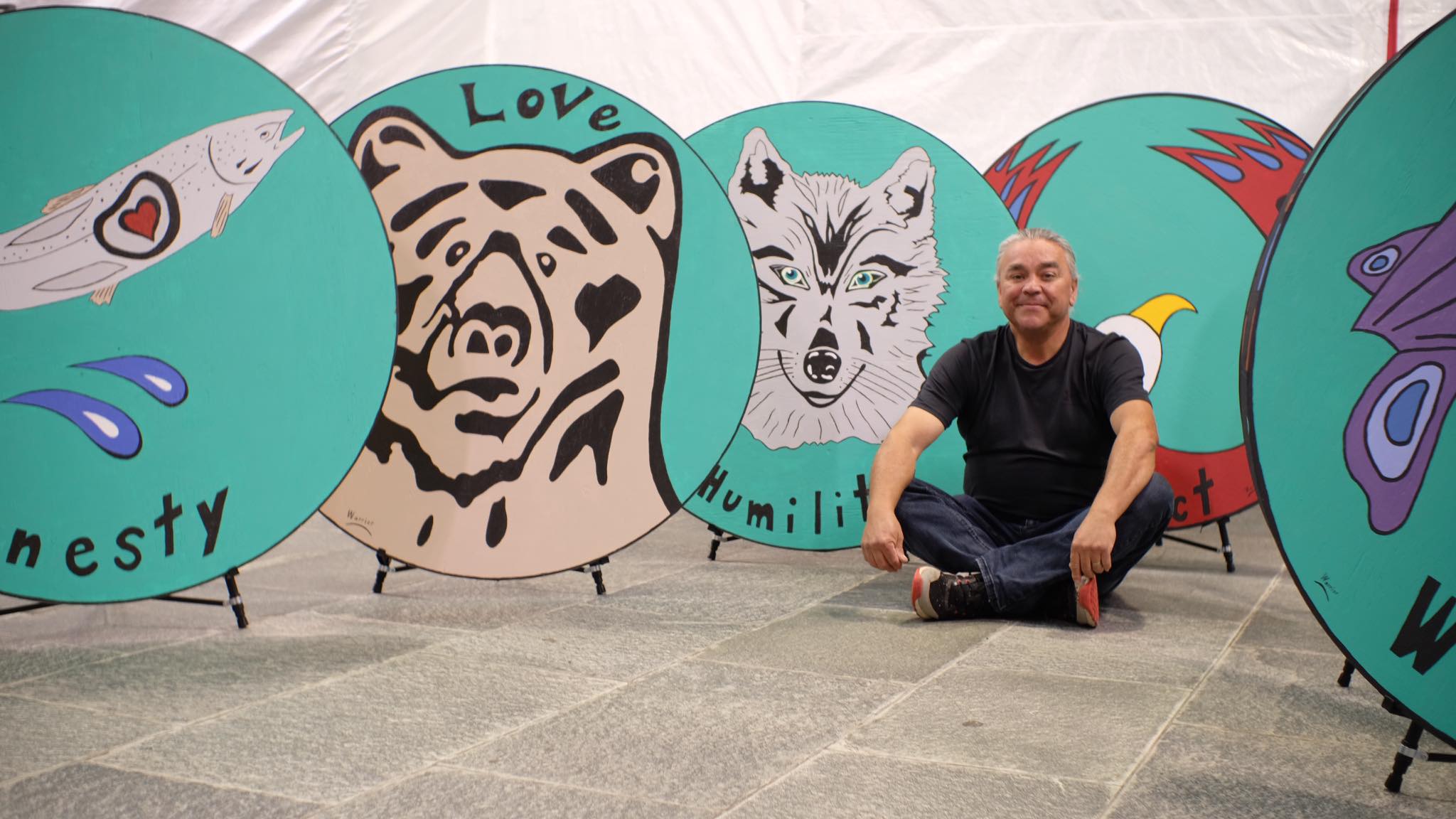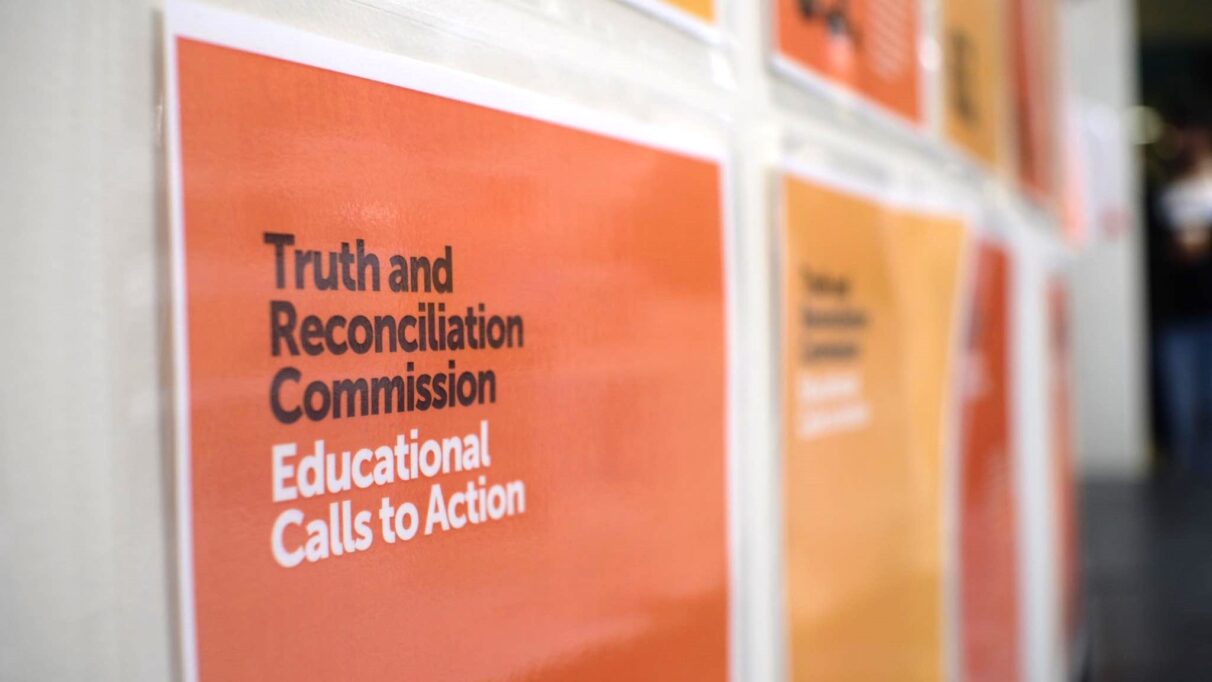Mi’kmaw artist used Killam Library installation to ‘put more light in dark areas’

caption
Lorne Julien at Killam Library on Thursday, Oct. 12, 2023. The library plans to have his artwork, “The Seven Sacred Teachings,” displayed on the outer walls of the building.Killam Memorial Library, with its thick concrete walls and slated flooring, can feel like a gloomy place to some Dalhousie University students.
“Killam…looks like a jail,” says third-year student Taylor Kerr. She often frequents the library to study and says most spaces at the university are lacking in “pizzaz.” She said, “the walls are boring…and there’s no space to study.”
But one day in October, Kerr noticed something different in the Killam. Tables had been moved and in their place stood seven circular paintings. Each one was of a different animal, all appearing against a bright turquoise background and accompanied by a single word.

caption
Dalhousie University’s Killam Memorial Library is described by student Taylor Kerr as looking “like a jail.”It was an art piece by Lorne Julien, 58, who signs his paintings with his Mi’kmaw name, “Warrior on the Hill.”
Acting head of Killam Library Elaine MacInnis says the paintings were commissioned by the university to welcome athletes from the North American Indigenous Games, who were staying on campus during the event.
Julien, who has become known for his bright and simple art style, is from Millbrook First Nation. He says the piece, which took two weeks to complete with the help of his friends and family, represents the Seven Sacred Teachings of the Mi’kmaq people.
The animals displayed in the artwork are fundamental to these teachings, which stem from Indigenous efforts to understand the relationship between themselves and their environment, he says. Having historically observed and honoured them, the Mi’kmaq have taken lessons from these animals such as honesty, respect and wisdom.

caption
Julien says the Seven Sacred Teachings, featured in his paintings at the Killam Library, are learned through Mi’kmaq’s interaction with their environment.“I think you have to find those things within yourself,” Julien said when thinking about the sacred teachings. For him, the bear (mui’n), which represents love, reminds him of the bear hugs he gives to his grandkids.
He said he is trying to “put more light in dark areas,” and he sees his work as a means of addressing difficult topics and taking part in the process of healing.
MacInnis says Julien’s piece, which Dalhousie plans to mount on the exterior of the library, is one way in which the university is working towards “ReconciliACTIONs.” As part of this commitment, Dalhousie has several other art installations including a handcrafted table from Mi’kmaq artisans Jim and Cheryl Walsh.
Shiloh Bouvette, who works with Dalhousie’s communications, marketing, and creative services team, says the university hopes having Indigenous art around the campus will help educate the community about its “location in Mi’kma’ki, the ancestral and unceded territory of the Mi’kmaq.”

caption
Dalhousie houses several artworks by Indigenous artists including a table in the Ko’jua Okuom, handcrafted by Jim and Cheryl Walsh.Kerr, the third-year student, feels more conversations are needed still to help students understand the significance of reconciliation. She says community role models, such as professors, are key to facilitating this.
“Professors shouldn’t be afraid to talk about it,” she said. While land acknowledgements are an important part of the conversation, she said discussions need to go beyond simply stating them.
Kerr also thinks staff participation is key to getting students actively involved in Truth and Reconciliation Day events. She said, “if the professors don’t even want to be there, then why should I?”

caption
Dalhousie university’s Student Union Building displays some of the “Calls to Action” brought forth by Canada’s Truth and Reconciliation Commission. Student Taylor Kerr wants to see more done to encourage student participation in reconciliation.For his people, Julien says Mi’kmaq live in a post-genocide era. He hopes to help others heal as suffering continues to burden Indigenous people from all over Turtle Island (North America) and across generations.
“Now it’s about peace…and forgiveness and moving forward,” he said.
About the author
Andie Mollins
Andie is from Shediac, a small but lively beach town in New Brunswick. She studied history and sociology at the University of New Brunswick and...
